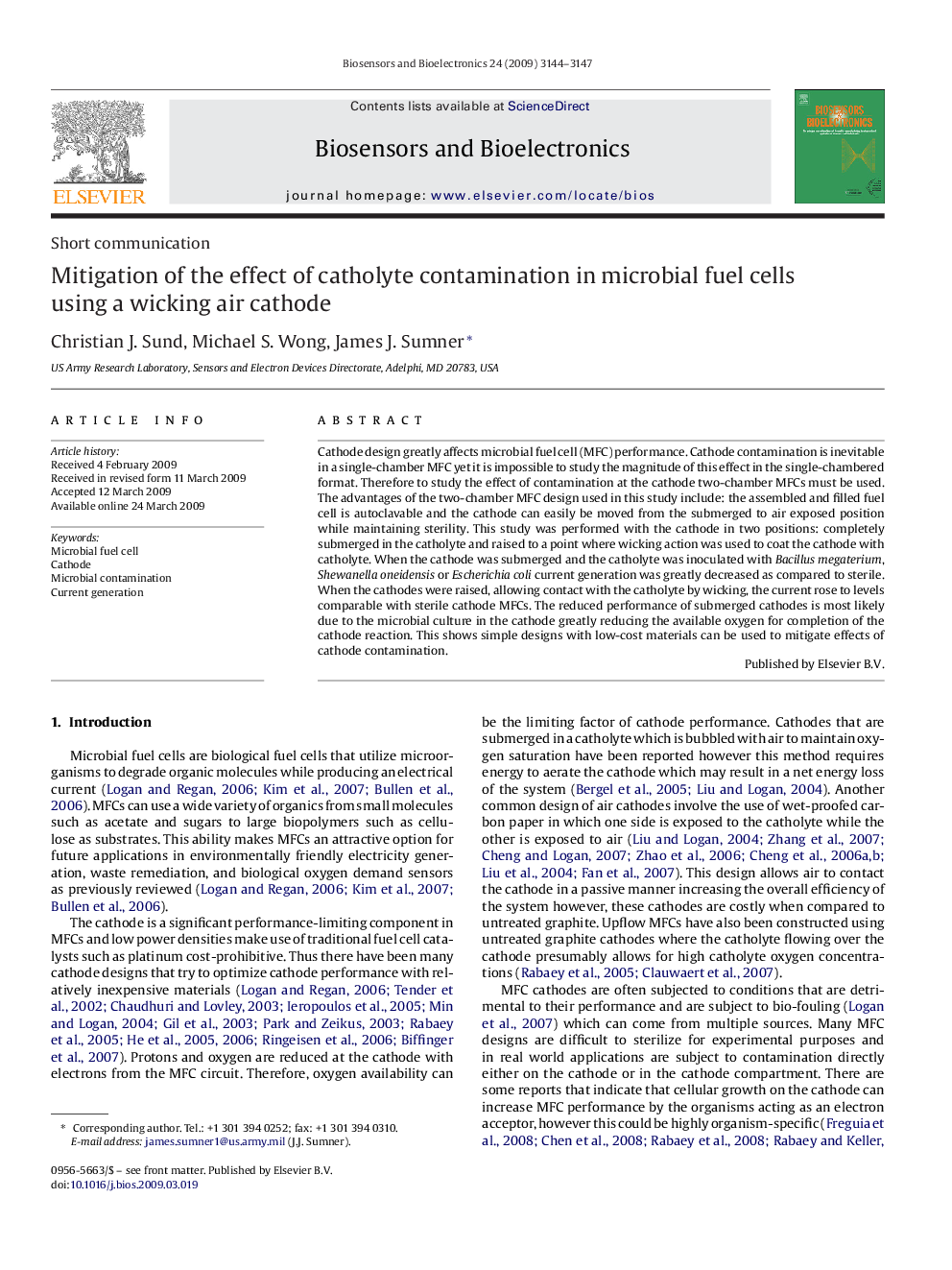| Article ID | Journal | Published Year | Pages | File Type |
|---|---|---|---|---|
| 868946 | Biosensors and Bioelectronics | 2009 | 4 Pages |
Cathode design greatly affects microbial fuel cell (MFC) performance. Cathode contamination is inevitable in a single-chamber MFC yet it is impossible to study the magnitude of this effect in the single-chambered format. Therefore to study the effect of contamination at the cathode two-chamber MFCs must be used. The advantages of the two-chamber MFC design used in this study include: the assembled and filled fuel cell is autoclavable and the cathode can easily be moved from the submerged to air exposed position while maintaining sterility. This study was performed with the cathode in two positions: completely submerged in the catholyte and raised to a point where wicking action was used to coat the cathode with catholyte. When the cathode was submerged and the catholyte was inoculated with Bacillus megaterium, Shewanella oneidensis or Escherichia coli current generation was greatly decreased as compared to sterile. When the cathodes were raised, allowing contact with the catholyte by wicking, the current rose to levels comparable with sterile cathode MFCs. The reduced performance of submerged cathodes is most likely due to the microbial culture in the cathode greatly reducing the available oxygen for completion of the cathode reaction. This shows simple designs with low-cost materials can be used to mitigate effects of cathode contamination.
